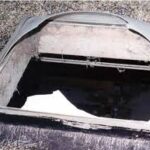Coroner’s Inquest into Skylight Fatality Releases Recommendations

In 2012, a 24-year-old worker in Ontario died from injuries she received in a 21-foot fall through a skylight to a concrete floor. She’d been part of a crew installing plastic sheathing on the building’s roof. Although none of the other workers on the roof at the time saw her fall, witnesses indicated she may have been retrieving an extension cord at the time.
Her employer pleaded guilty to OHS violations and was fined $80.000. But a coroner’s inquest was also conducted as to the fatality and it recently released recommendations on how to improve construction worker safety.
Evidence at the inquest indicated that the worker hadn’t been wearing any fall protection, such as a harness or travel restraint. In addition, she hadn’t attended a workplace safety seminar provided by an OHS consultant.
Although the inquest jurors were aware of the new working at heights safety training requirements that took effect on April 1, they had several specific recommendations for the MOL:
- The ministry should require employers to post specific laws and regulations pertaining to employer, supervisor and employee rights and responsibilities under the OHS Act related to fall protection safety at access points to potential hazardous areas exceeding a height of three metres.
- Training courses relating to fall protection should include a mandatory component advising both trainer and workers taking those courses that a skylight is a fall hazard and to take preventative measures when working around or in the area of skylights.
- The word ‘skylight’ should be included and specifically identified as a fall hazard in Sec. 26 of the Construction Projects Regulation.
- All trainers who are approved by the CPO to give fall protection training courses under the new legislation shouldn’t be able to delegate that task to a trainer who isn’t certified by the CPO.
- The employer should be responsible for ensuring that its workers who hold a valid fall protection certificate are given safety specific training relevant to the type of work, job or project that it’s asking them to perform.
- Upon registration of training, government-issued identification should be used to verify the identity of the student and a record kept of the same.
The jurors also had a recommendation for the CSA: Manufacturers of skylights should place an easily visible, permanent, tamper-proof warning on the frame of the product, advising the consumer of the product’s appropriate use, payload and the safety risk associated with skylights.